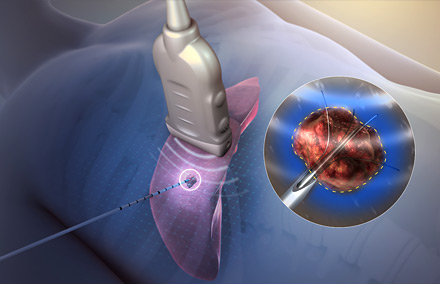
Radiofrequency ablation process
1. Under the guidance of imaging equipment (such as CT), percutaneous puncture is performed and the electrode needle is inserted into the tumor.
2. Connect the radiofrequency ablation device and energize the tumor according to the program and duration set before the operation.
3. Review imaging to ensure that the tumor is engulfed by "flames" and coagulative necrosis occurs
Advantages of radiofrequency ablation
Image guidance, real-time tracking, accurate and reliable; no surgery required, only percutaneous puncture treatment under local anesthesia.
Less trauma, less pain, less side effects, stable efficacy, fast recovery, and short treatment cycle treatment is effective and can achieve results similar to those of surgical resection.
Clinical Application
Applicable to liver cancer, lung cancer, breast cancer, and various metastatic tumors.
Patients with recurrence after surgery.
Tumors with a diameter less than 5 cm and fewer than 3 tumors
Tumors larger than 5cm can be treated with fractionated treatments, which can significantly reduce the size of the tumor and delay its development.
people or those with other diseases who cannot tolerate surgical resection


 (+86)18613012387
(+86)18613012387 info@royallee.cn
info@royallee.cn EN
EN CN
CN TH
TH IDN
IDN  AR
AR


